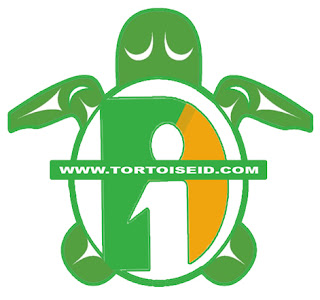DESCRIPTION
Common Name: LEOPARD TORTOISE
Scientific Name:Geochelone pardalis
Current Size: 12CM
Average Adult Size: 10-16" (females larger)
Area of Origin:East Africa
Description: The Geochelone Pardalis or the High White Leopard tortoise is a huge and attractive tortoise commonly found from southern to eastern Africa. Its range Extends from Cape Town, South Africa in the south to Sudan in the east. They inhabit the complete savannah region of Africa. This is the fourth largest tortoise and can grow up to 18-20 inches in carapace length. A full grown adult easily weighs around 40-45 lbs. It has an elaborate distinctive color pattern on the carapace. The carapace has pyramidal scutes. The carapace is black or dark olive colored with hexagonal, pentagonal or square yellow boxes in each scute and inside all these boxes are another set of intricate geometrical designs in black and yellow or cream. As the name suggests the Leopard turtle is high. The height contributes to its reputation as being the 4th largesttortoise. Its carapace is highly domed and forms a huge mound almost making a hemisphere. The highest point of its carapace is higher than half its length. The huge carapace is not only attractive; it is very strong and protects the tortoise from predators. The Geochelone Pardalis is a docile tortoise, a hardy species that not only adjusts and adapts to their new environment but is also very temperamental and in spite of its size never attacks its keepers. It prefers to live alone or in groups of 3-4. It spends most of its time grazing grass and eating cactus. Its beak like mouth is well evolved to eat cactus without hurting. Despite of its huge size and heavy carapace the High White Leopard tortoise is an efficient climber and runner. They have long lifespan and can live for over hundred years.
Habitat:The Geochelone Pardalis are endemic to the dry and arid savannahs of Africa, where the landscape varies from rocky, sandy and rubbles to grasslands. They are highly weather tolerant and nest in abandoned jackal or anteater burrows or foxholes. The ideal captive habitat for these turtle is an open garden space. In case that is not possible a cage can be used that is large enough to allow free movement, hiding space, basking space and a puddle of water. A 4x8 feet glass box is the minimum size requirement. The terrarium should befitted with lighting and heating equipment. The temperature should be maintained around 75 to 85 degrees Fahrenheit. Insufficient exposure to sunlight can lead to unnatural death due to lack of calcium synthesis. It can be avoided by fitting a UVB light in the terrarium. The water area should be big enough to allow the tortoise to completely soak itself but not too big to drown it. If you can you should take it out into direct sunlight once in a while.
Diet: The High White Leopard Tortoises are completely herbivores and feed only on grass, certain plants, weeds and cactus. In captivity keepers are advised to follow a low protein and high fiber diet.Besides grass you can feed them chopped chunks of carrots, vegetables, lettuce and cabbage.
Adult Behavior: Adult leopard tortoises are peaceful, slow moving tortoises. They are un-aggressive towards eachother in most cases, and do little damage to their environment (little or no digging or burrowing). Some individuals can be skittish if spooked, but most will eagerly come to their keepers looking for food once they are comfortable in their environments. They are not very good climbers and make little attempt to escape, so a short, basic wall will contain most leopard tortoises.

